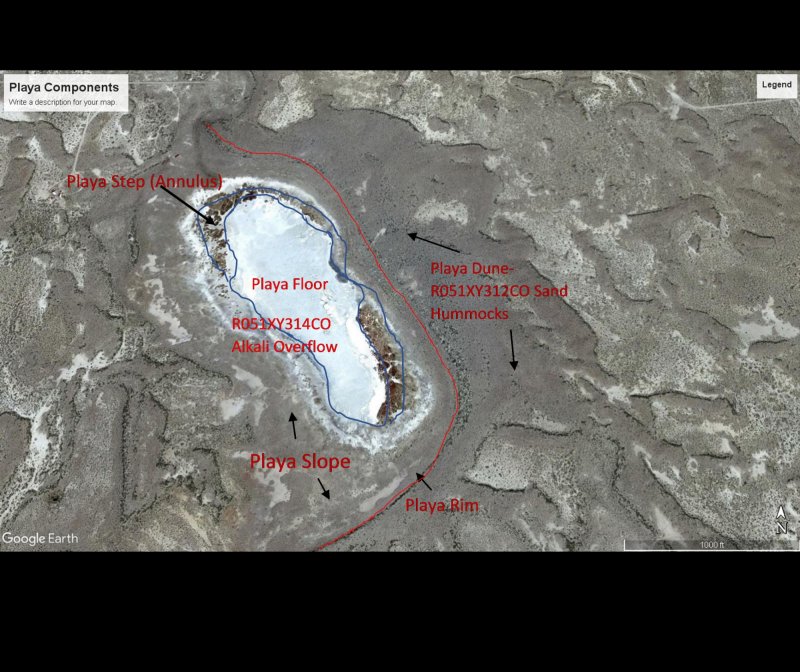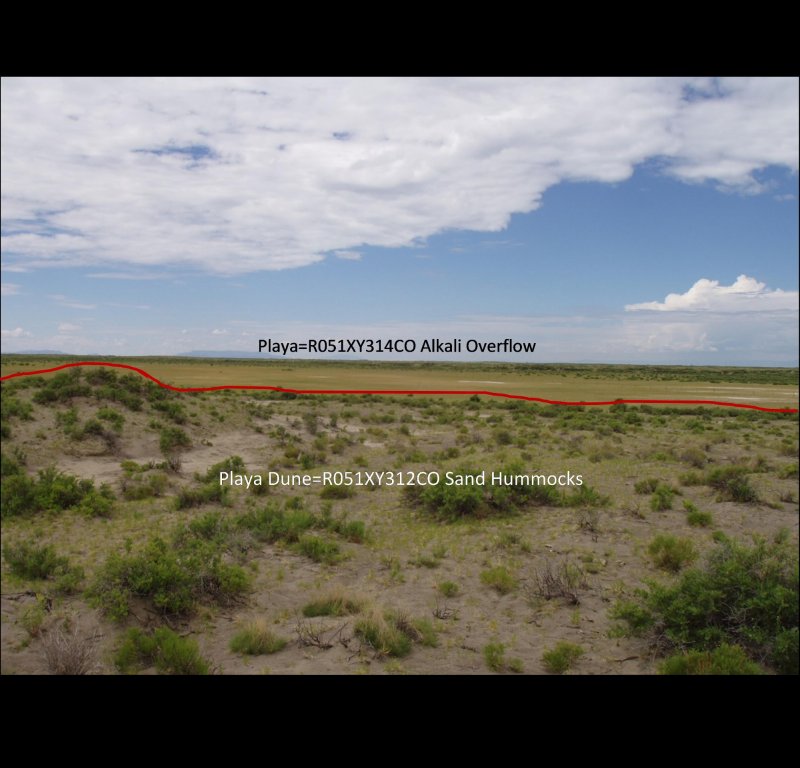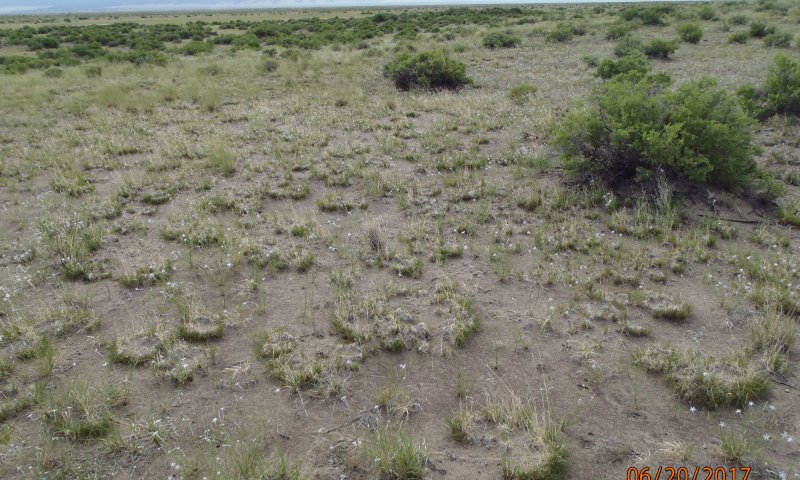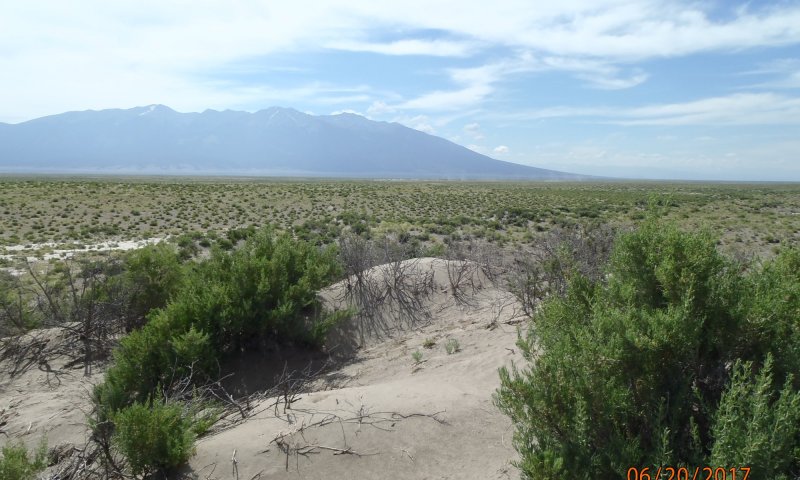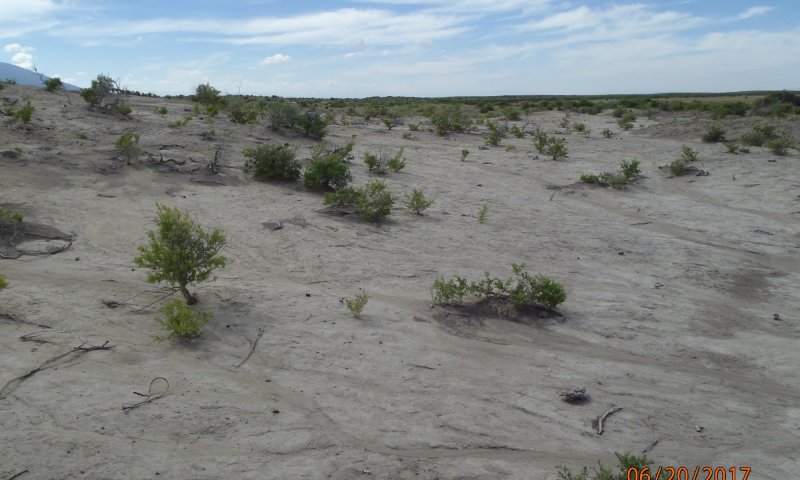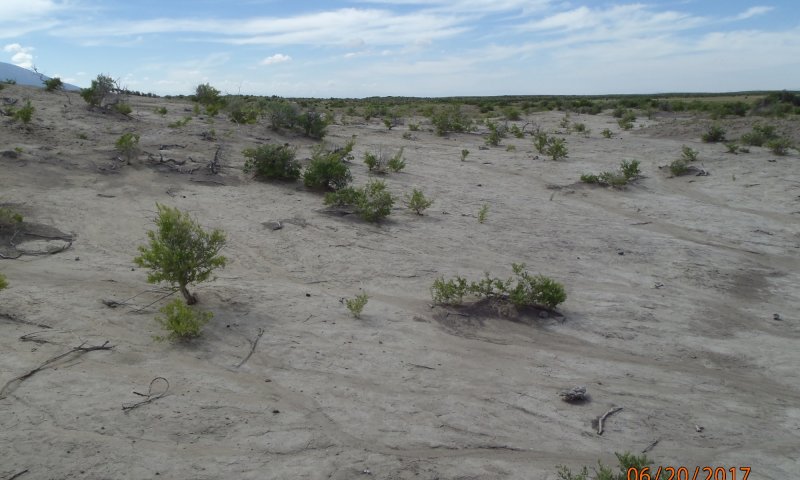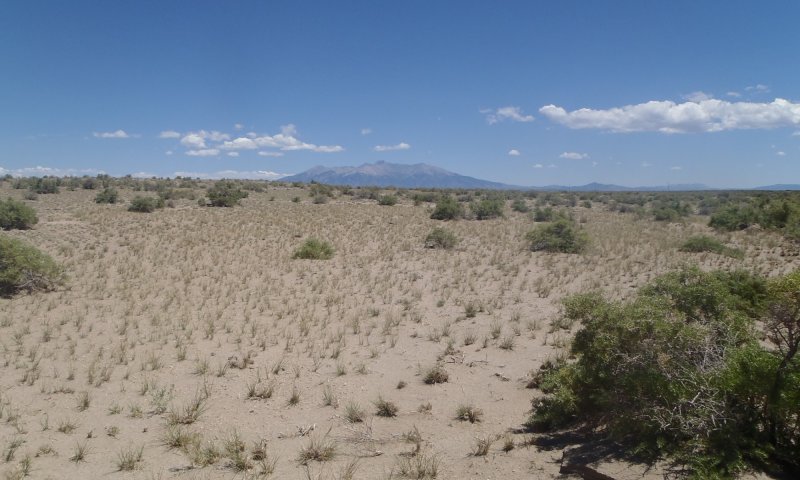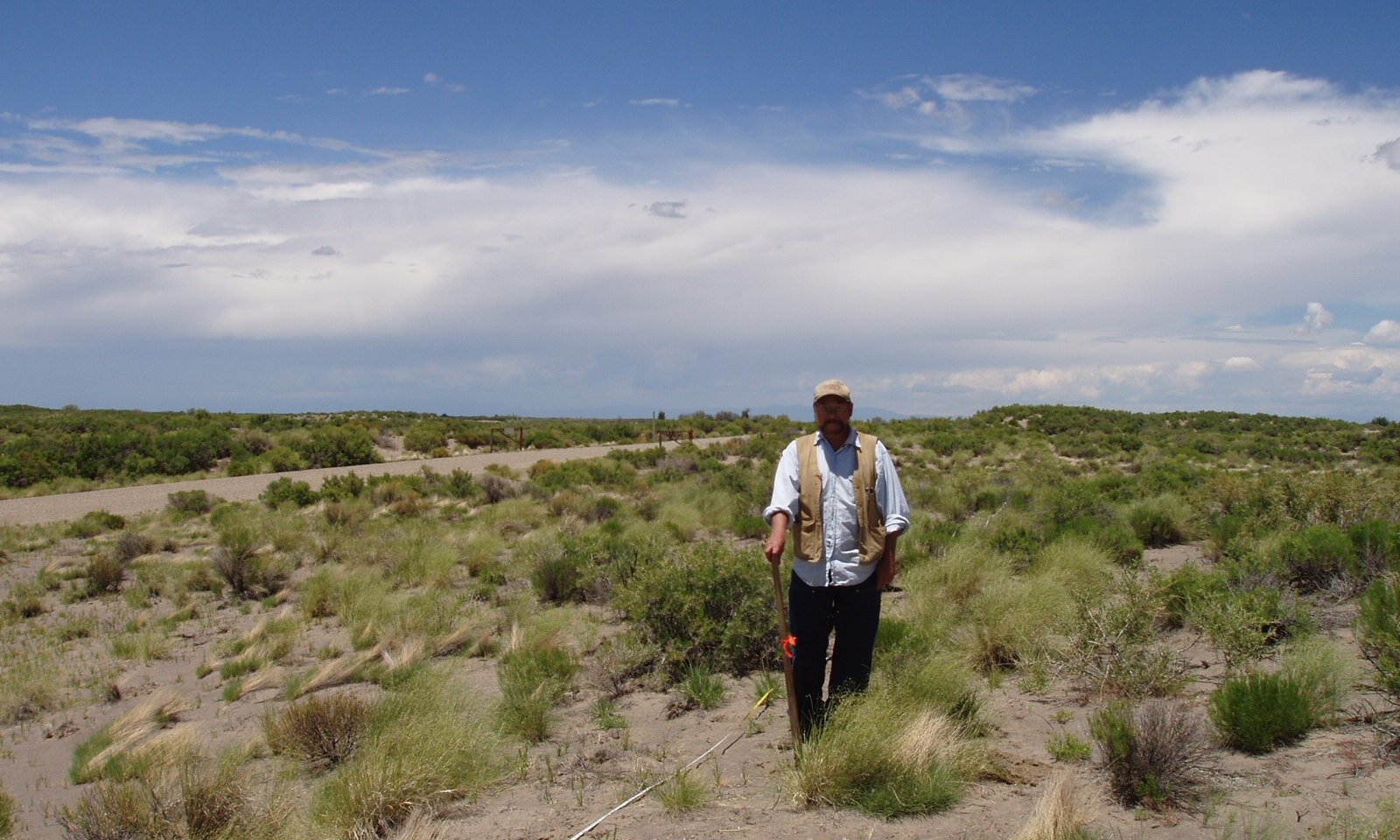

Natural Resources
Conservation Service
Ecological site R051XY312CO
Sand Hummocks
Last updated: 9/07/2023
Accessed: 11/21/2024
General information
Provisional. A provisional ecological site description has undergone quality control and quality assurance review. It contains a working state and transition model and enough information to identify the ecological site.
MLRA notes
Major Land Resource Area (MLRA): 051X–High Intermountain Valleys
This MLRA encompasses the San Luis Valley in south central Colorado and the Taos Plateau and Taos alluvial fans of north central New Mexico. As part of the northern portion of the Rio Grande Rift, the MLRA consists of large, alluvium filled basins washed down from adjacent mountain ranges. The Rio Grande River flows through this MLRA, continuing its long function of carrying mountain sediment down to the basin. Cenozoic volcanism is an extensive characteristic of the MLRA where large basalt flows with volcanic hills and domes are abundant. Ancient Lake Alamosa is a large feature within the MLRA..
LRU notes
A large portion of the San Luis Valley, north of Alamosa is a closed basin. Drainages flowing into this closed basin include: irrigation diversions from the Rio Grande River; Carnero, La Garita, and Saguache Creeks from the west; San Luis Creek from the north; and North Crestone and Sand creeks from the east. This low area or "sump" extends from San Luis Lake to the Blanca wetlands. As water flows into the closed basin it spreads out across the valley floor where it evaporates or infiltrates, recharging the underground aquifer.
Classification relationships
NRCS:
Major Land Resource Area 51, High Intermountain Valleys (United States Department of Agriculture, Natural Resources Conservation Service, 2006).
USFS:
331J – Northern Rio Grande Basin M331Ic > 331Ja - San Luis Valley, 331Jb - San Luis Hills and 331C - Mogotes
EPA:
22 - Arizona/New Mexico Plateau > 22a - San Luis Shrublands and Hills ; 22b -San Luis Alluvial Flats and Wetlands ; 22c - Salt Flats; 22e - Sand Dunes and Sand Sheets and 22f -Taos Plateau (Griffith, 2006).
USGS:
Southern Rocky Mountain Province
Ecological site concept
This site exists in the lowest reaches of a closed basin. It is intermingled with the alkali overflow site and is correlated to the playa dunes component of the basin floor. Because the soils were developed from coarse, wind-blown material on the leeward side of a playa and erosion and deposition are a constant issue, this site can develop "hummocks" and the plant community exists as a sparse, uneven cover of grass and shrubs.
The site also exists on the leeward side of drainages throughout the drained basin. This site occurs where sand has been lifted and deposited to form small dunes with heights ranging from 2-15 feet and an area from a few square yards to 10 acres.
Associated sites
| R051XY314CO |
Alkali Overflow The sand hummocks and the alkali overflow make up the major components of the playa system. The alkali overflow exists on the portions that is regularly flooded such as the playa floor, step, and slope. The sand hummocks exist on the playa dune. |
|---|---|
| R051XY263CO |
Salt Flats The salt flats exists adjacent to the playa floor on the alluvial flat. It is not part of the playa complex and is an upland site that is more stable with a mix of grasses and shrubs. |
| R051XY264CO |
Chico Land Chico land, like the salt flats exists on the alluvial flat, it is not part of the playa complex. Chico land is associated with the salt flats site where soils become higher in alkalinity and production is sparser. |
| R051XY267CO |
Salt Meadow Salt Meadows occur as thin bands between the salt flats and the wet meadows. And sometimes the two are intermingled. Salt meadows support higher amounts of salt tolerant species such as alkali sacaton and inland saltgrass. |
Similar sites
| R051XY275CO |
Deep Sands 7-9 PZ This site is coarse loamy; deep to very deep in depth and is non-saline. It occurs on dunes and sand sheets. Sand Hummocks occur as dunes in the playa and are saline. |
|---|
Table 1. Dominant plant species
| Tree |
Not specified |
|---|---|
| Shrub |
(1) Sarcobatus vermiculatus |
| Herbaceous |
(1) Distichlis spicata |
Click on box and path labels to scroll to the respective text.
